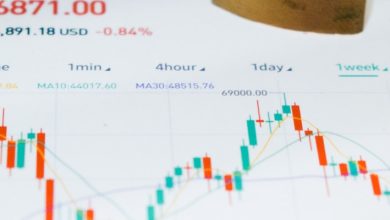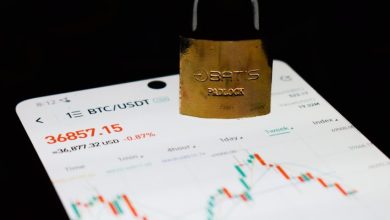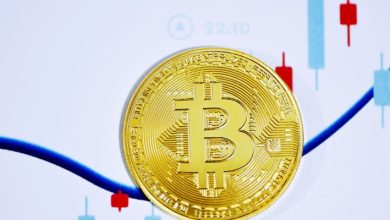DeFi Market Insights: Growth, Challenges, and Opportunities

- Understanding the DeFi Market Landscape
- Exploring the Rapid Growth of DeFi Ecosystem
- Challenges Faced by DeFi Platforms and Users
- Opportunities for Innovation in the DeFi Space
- Regulatory Hurdles in the DeFi Market
- Investment Strategies for DeFi Enthusiasts
Understanding the DeFi Market Landscape
The DeFi market landscape is a rapidly evolving ecosystem that offers a wide array of financial services through decentralized platforms. This sector has seen significant growth in recent years, with more investors and users participating in various DeFi projects.
Understanding the DeFi market landscape is crucial for investors looking to capitalize on the opportunities and navigate the challenges that come with this innovative space. By gaining insights into the different sectors within DeFi, investors can make informed decisions and maximize their returns.
Key components of the DeFi market landscape include decentralized exchanges (DEXs), lending platforms, yield farming, and liquidity mining. Each of these sectors plays a unique role in the DeFi ecosystem, offering different opportunities for users to earn passive income and participate in decentralized finance.
As the DeFi market continues to expand, new projects and protocols are constantly being introduced, creating a dynamic and competitive environment for investors. Staying up to date with the latest trends and developments in the DeFi space is essential for success in this fast-paced industry.
Exploring the Rapid Growth of DeFi Ecosystem
The rapid growth of the decentralized finance (DeFi) ecosystem has been nothing short of remarkable in recent years. DeFi has revolutionized traditional financial services by leveraging blockchain technology to provide users with decentralized alternatives to banking, lending, and trading. This innovative approach has attracted a diverse range of participants, including retail investors, institutional players, and developers.
One of the key drivers behind the growth of DeFi is the rise of decentralized applications (dApps) that offer a wide range of financial services, such as decentralized exchanges (DEXs), lending platforms, and yield farming protocols. These dApps enable users to access financial services directly from their wallets, without the need for intermediaries or centralized authorities. As a result, DeFi has gained significant traction in the crypto community and beyond.
Furthermore, the DeFi ecosystem has experienced explosive growth in total value locked (TVL), which refers to the amount of assets locked in DeFi smart contracts. The TVL in DeFi has surged to billions of dollars, indicating the increasing demand for decentralized financial services. This growth has been driven by factors such as high yields, innovative products, and improved user experience.
Challenges Faced by DeFi Platforms and Users
DeFi platforms and users face various challenges in the rapidly evolving decentralized finance landscape. These challenges can impact the overall growth and adoption of DeFi solutions. Some of the key challenges include:
- Lack of regulatory clarity: DeFi platforms operate in a regulatory grey area, which can lead to uncertainty for users and hinder mainstream adoption.
- Security vulnerabilities: DeFi platforms are susceptible to smart contract bugs, hacks, and exploits, which can result in significant financial losses for users.
- Scalability issues: Many DeFi platforms struggle to handle high transaction volumes, leading to network congestion and high fees.
- Interoperability challenges: DeFi protocols often operate in silos, making it difficult for users to move assets and data between different platforms seamlessly.
- User experience: The user interface and experience of DeFi platforms can be complex and daunting for new users, hindering widespread adoption.
Addressing these challenges will be crucial for the long-term success and sustainability of the DeFi ecosystem. Collaboration between industry stakeholders, continuous innovation, and a focus on security and usability will be key in overcoming these obstacles and unlocking the full potential of decentralized finance.
Opportunities for Innovation in the DeFi Space
In the rapidly evolving DeFi space, there are numerous opportunities for innovation that can drive growth and enhance the ecosystem. By exploring new ways to optimize existing protocols and develop novel solutions, industry players can stay ahead of the curve and capitalize on emerging trends.
One key area for innovation in DeFi is enhancing interoperability between different platforms and protocols. By creating seamless connections and integrations, DeFi projects can unlock new possibilities and increase efficiency for users. This can also help in expanding the reach of DeFi services to a wider audience, driving adoption and growth in the market.
Another opportunity for innovation lies in improving the user experience of DeFi applications. By focusing on user-friendly design, intuitive interfaces, and streamlined processes, developers can attract more users and make DeFi more accessible to mainstream audiences. This can help in overcoming the current barriers to entry and expanding the DeFi market to new demographics.
Furthermore, there is potential for innovation in creating sustainable and environmentally friendly DeFi solutions. By exploring greener alternatives to current blockchain technologies and implementing eco-friendly practices, DeFi projects can differentiate themselves in the market and appeal to socially conscious users. This can also help in addressing concerns around the environmental impact of blockchain and cryptocurrency activities.
In conclusion, the DeFi space offers a multitude of opportunities for innovation that can drive growth, address challenges, and unlock new possibilities. By staying agile, adaptable, and open to experimentation, industry players can lead the way in shaping the future of decentralized finance and delivering value to users around the world.
Regulatory Hurdles in the DeFi Market
Regulatory challenges are a significant hurdle in the rapidly growing DeFi market. As decentralized finance continues to gain traction, regulators around the world are grappling with how to oversee this innovative sector. One of the main concerns regulators have is the potential for money laundering and other illicit activities to take place within the DeFi ecosystem. This has led to increased scrutiny and calls for stricter regulations to be implemented.
Investment Strategies for DeFi Enthusiasts
For DeFi enthusiasts looking to maximize their investment potential in this rapidly growing market, it is crucial to adopt effective strategies that can help navigate the challenges and capitalize on the opportunities presented. Here are some key investment strategies to consider:
- Diversification: Investing in a variety of DeFi projects can help spread risk and minimize potential losses. By diversifying your portfolio, you can take advantage of the growth potential of different projects while mitigating the impact of any underperforming ones.
- Due Diligence: Conduct thorough research on the DeFi projects you are considering investing in. Look into the team behind the project, the technology being used, the market demand for the product, and any potential risks or challenges that may impact its success.
- Risk Management: Set clear investment goals and establish risk management strategies to protect your capital. Consider implementing stop-loss orders, setting profit targets, and regularly reviewing and adjusting your investment portfolio based on market conditions.
- Stay Informed: Keep abreast of the latest developments in the DeFi space by following industry news, attending conferences, and participating in online forums and communities. Staying informed can help you make well-informed investment decisions and identify emerging trends early.
- Long-Term Perspective: While the DeFi market may be volatile in the short term, adopting a long-term investment perspective can help you ride out market fluctuations and benefit from the overall growth of the industry. Be patient and avoid making impulsive decisions based on short-term price movements.





